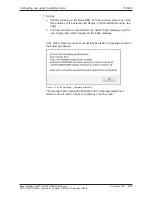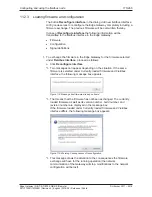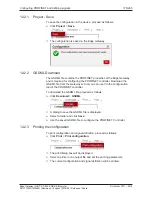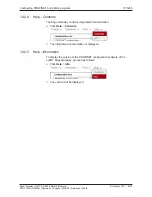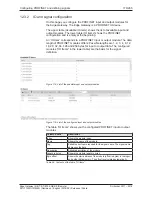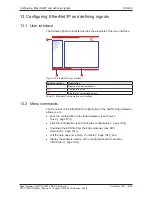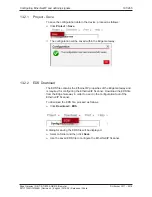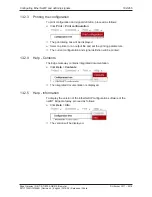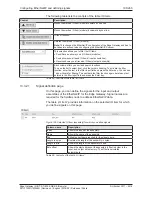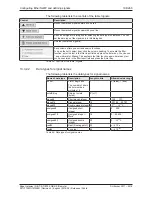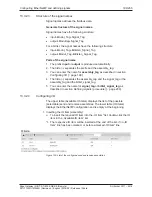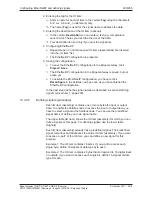
Configuring PROFINET and defining signals
185/263
12.3.2.5
Defining signals (procedure)
Each IO item (module) contains one or more bytes for input or output data.
To enable the fieldbus node to access the input or output data, you have to
select a signal at the fieldbus node. You can use the predefined signal
name or define your own signal name.
The upper table (IO item) shows the IO item (module) for which you can
define signals on this page. For defining signals, use the lower table
(Signals).
Each IO item (module) already has a predefined signal. The predefined
signal comprises and addresses the entire IO item (module). If you want to
access a „part“ of the IO item, you can define a new signal for this purpose.
Example 1: The IO item contains 16 bytes. If you want to access each
single byte, define 16 signals of data type byte each.
Example 2: The IO item contains 2 bytes that correspond to 16 digital input
or outputs. If you want to access each single bit, define 16 signals of data
type bit each.
Defining your own (new) signals
1. Selecting the IO item (module):
Ø
Select the IO item (module) for which you want to define signal names
in the configuration tree under
IO and signal configuration
.
Ê
The selected IO item is displayed in the workspace.
2. Deleting the predefined signal:
Ø
Mark the predefined signal in the table
Signals
.
Ø
Click
Delete selected items
.
Ê
The predefined signal is deleted and you can define your own signals.
Edge Gateway | NIOT-E-TIB100-GB-RE (Remote)
DOC170501UM04EN | Revision 4 | English | 2018-08 | Released | Public
© Hilscher 2017 – 2018


